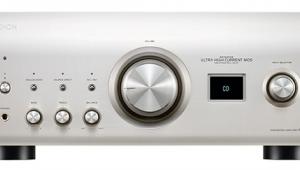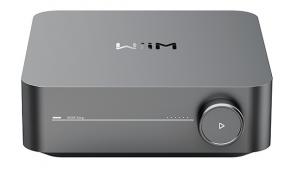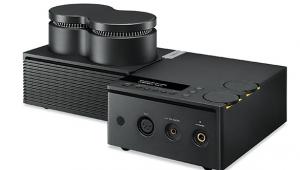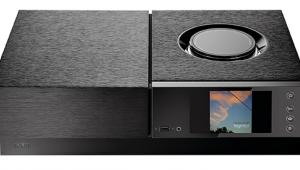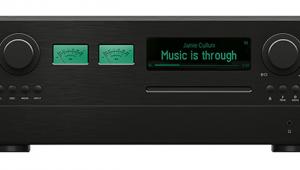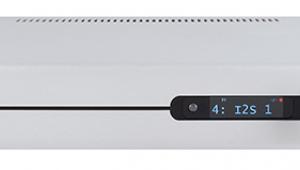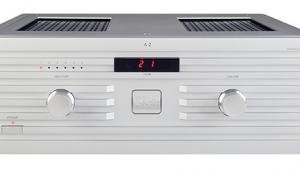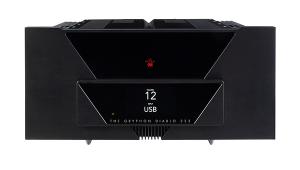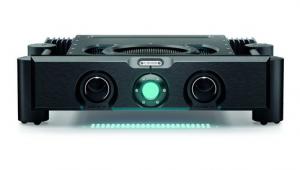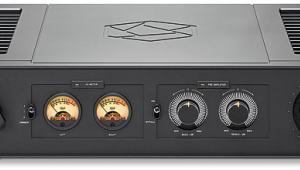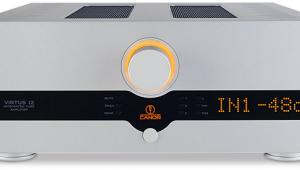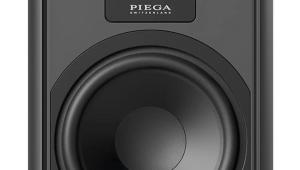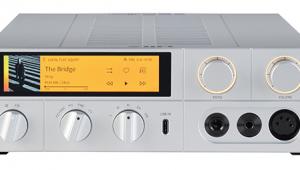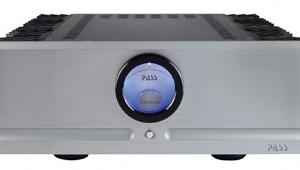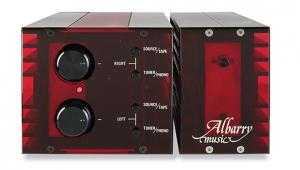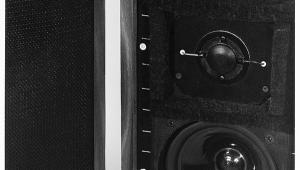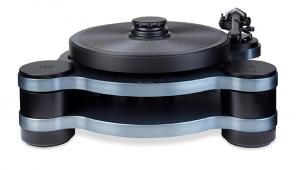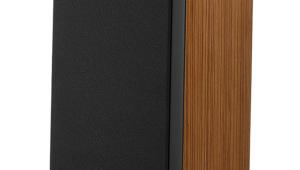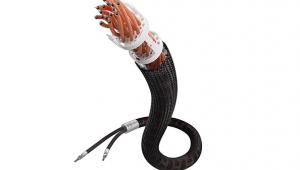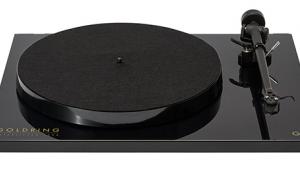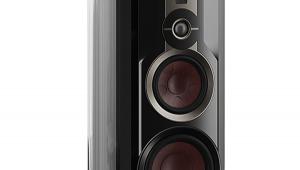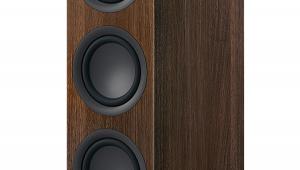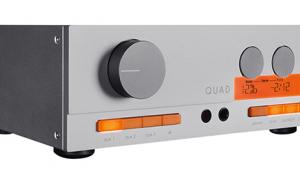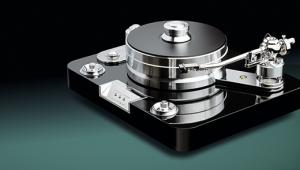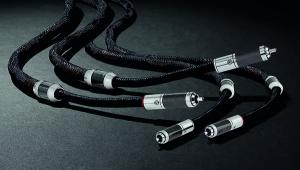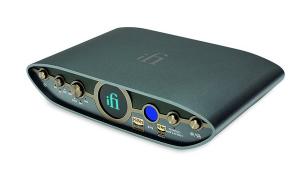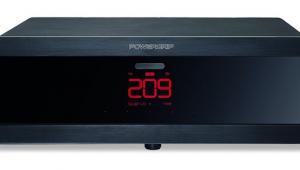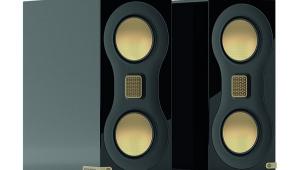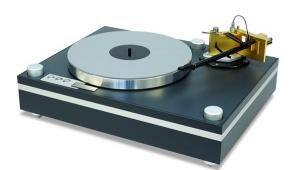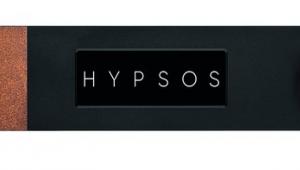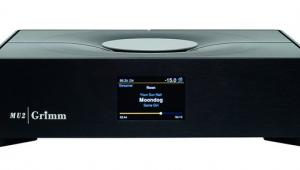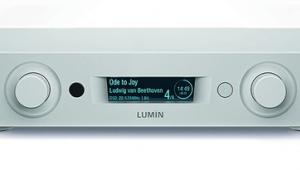D’Agostino Pendulum amplifier
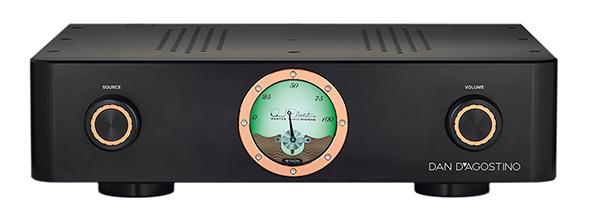

Shall we first dispense with the debate about what constitutes ‘expensive’? Just as ‘luxury’ means anything more than you need, ‘expensive’ means anything more than you’re prepared or able to spend. I’m not about to gloss over the fact that £18,000 for a stereo amplifier isn’t chicken feed to most of us, even in a world of amplifiers costing 30 times that amount.
However, in the context of the Dan D’Agostino Master Audio Systems range and the norms in today’s high-end hi-fi market, its Pendulum Integrated Amplifier begs precisely that ‘which must not be expressed’ if we want to avoid a mailbag of protest. So I’ll say it anyway – it’s a bargain. If you have always coveted one of Dan D’Agostino’s designs, possibly going back to the early days of Krell, but could not afford them, or if they were only slightly out of your reach, the Pendulum amplifier changes everything.
Optional extras
In line-level-only form at the aforementioned £18,000, or £22,000 ‘fully loaded’ as seen here, you will acquire an integrated amplifier of serious, usable power matched to total sophistication when it comes to the modern expectations of a remote control system, integration with home automation and streaming sources, an app for overall control and access to other facilities, etc.
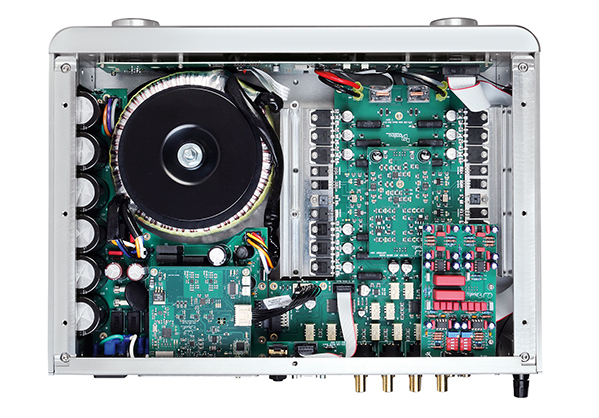
In basic form, minus the optional DAC (£2850) and fixed (60dB) gain MM/MC phono (£1150) modules, the Pendulum offers a minimalist front panel which works together with both a stylish BT remote and an app that operates via any Apple iOS device. Two rotaries and the central display – that’s it. Source selection and menu are accessed through the left knob, the right deals with level and mute, while between is an LCD replica of the familiar Breguet-inspired meter found on other D’Agostino products [HFN Jan ’24]. The ‘needle’ actually follows the actions of the rotary volume control and the rotary ring on the remote, dropping to zero when mute is used, while also indicating which input has been selected. The fancy, bi-directional remote [pictured, right] has its own on/off switch and is recharged via a USB-C port.
Under its substantial lacquered alloy hood, the Pendulum leverages the low-noise J-FET line stage premiered in the Momentum C2 and HD preamplifiers [HFN Apr ’20] with the current evolution of designer Dan’s high current complementary power amp, here with three big bipolar transistors (per side) bolted to heatsinking on the bottom of the case. The metalwork is substantial but a fair proportion of the amplifier’s 15.9kg bulk is taken up by the large toroidal mains transformer feeding the PSU [see inside picture, above].
All down the line
Aside from one set of RCA phonos – more on which below – the rear panel contains three pairs of XLR inputs and a pair of XLR preamp outputs [see PM's Lab Report]. All are line-level unless the phono module is installed, in which case that particular input reverts to MM/MC only. The DIP switches for setting up MC cartridges at 1k, 500, 250, 100, 50ohm, and 47kohm for MMs, can be found under a small hatch on the Pendulum’s lid.
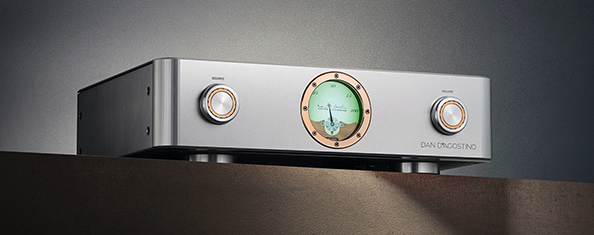
As this was the case, I had no RCA line input for my legacy products that lack balanced XLR outputs. This is no real issue as I ran four different single-ended-only sources including a CD player, an open-reel tape deck and two phono amps by using phono-to-XLR adapters (female RCA sockets to male XLRs) found on amazon.co.uk for under a tenner a pair. No mismatches, no nasties – just blissful use of extant sources.
Which brings us to the digital module, based around the low power consumption version of ESS’s latest ES9039 DAC. This adds one input each of Toslink optical, HDMI eARC, and wired (RJ45) and wireless Ethernet. It’s worth mentioning here that the Pendulum (which I like to think was named after a Creedence Clearwater Revival album) comes with antenna for both Bluetooth (for the remote) and Wi-Fi connectivity. Employing these is essential to enjoy all that the amplifier can offer, both digital input features and streaming subscriptions, but I will admit that I spent 90% of my time using it as a line-level, old-school unit save for enjoying that outrageous BT remote.
A new world
All this said, one must not forget that, however brilliant the Pendulum might turn out to be, it is an exercise in economy even if at an elevated price point. And, no, I don’t mean compromises on parts quality or performance, because this amplifier feels expensive in every way. Instead, it is all about presenting the consumer with a means of entry into the ‘real high-end’ via D’Agostino hardware.
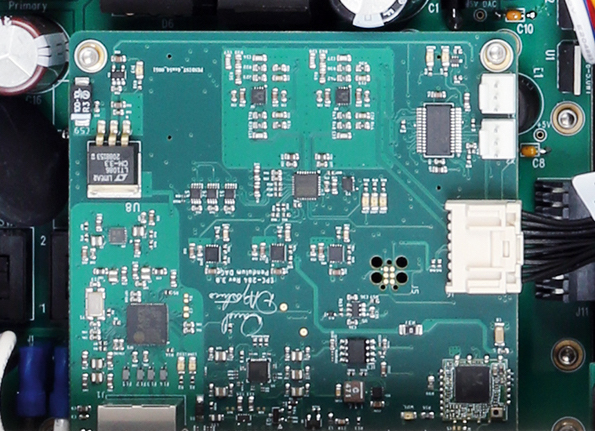
I feel I must balance the various reasons for buying the internal modules versus using a legacy DAC and/or phono stage, or purchasing new outboard units. It’s very likely that superior, more flexible outboard DACs and phono preamps can be had for the same money as these options, though this must be weighed against the convenience of a one-box solution. Having full control over the DAC, as well as volume, etc, thanks to the app, and dispensing with two extra mains leads and interconnects is hard to argue with if you’re an audiophile looking for a simpler life...
![]() King of swing
King of swing
Although the following focuses on the Pendulum as a balanced line-in integrated amp, I did have a go with both modules, running MC and MM cartridges for the phono section. Playing ‘Superstition’ from Stevie Wonder’s The Definitive Collection [Motown 006024751522729], I was impressed – having previously listened to it through the £68,000 Nagra HD Phono [HFN Jun 25] – with the naturalness of the vocals, contrasting with whatever synth or keyboard makes all that twanging. The opening percussion was something to behold: crisp, fat, open and – what else can I say? – hyper-funky. Make no mistake, sonically the phono module is worth £1150, but outboard rivals for the same price or less will offer more gain options.
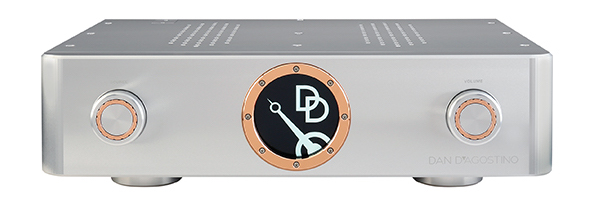
Moving to the digital board and the app, there’s always the obvious choice of iPhone, but an iPad Mini proved the ideal device between squinting at a phone screen or schlepping a full-sized iPad around the listening room. When you see the main control screen, with HDMI, polarity inversion, ‘Dark Mode’ to disable the light show, headphone select, and more, you’ll appreciate a larger display.
With clear graphics and almost self-explanatory operations, the app takes over control of major streaming suppliers including Spotify, Qobuz and Tidal as well as music stored elsewhere on your network. The app handles sleeve art, track info and more. In my case, as I won’t give one penny to streaming sources, I had long ago loaded the iPad with the complete Beatles catalogue from the ‘metal’ Apple USB containing the 2009 remasters (you can find it online for under £300 so avoid the scalpers asking a grand).
I was delighted to find that it was virtually indistinguishable from playing it through a USB-equipped outboard CD/DAC, not least Ringo’s magnificent drumming at the end of Abbey Road. It had all the weight I was hoping to hear, with superb attack. Another welcome discovery was warmth in the vocals, achieving an almost valve-like nature (not something I would say to founder and designer Dan D’!). It proved a stand-out feature of ‘Hey Jude’ from Past Masters, and it also revealed one of the Pendulum’s most endearing skill sets, that of recreating a 3D soundstage.
To DAC or not to DAC?
If you’re torn between the modules, as opposed to buying both, the DAC will give you more enjoyment from the Pendulum, and – remembering this is about value – it’s the best way to get your money’s worth. Indeed, so integral is the app to the full Pendulum experience, assuming the user enjoys digital sources and not just vinyl nor tape, that I suspect the majority of buyers will opt for it.
That said, I fed via XLR a £14,000 transport/DAC combination and that was the first thing to show me just how special is this integrated amplifier. It kept reminding me of the sheer scale of its titanic sibling, the Relentless 800 [HFN Jun ’24]. The Pendulum, weighing in at a mere 15.9kg and demanding only 432x118x356mm (whd) of shelf space, is like a monster truck masquerading as a golf cart. The photos don’t tell you just how bijou it is, hardly an adjective ever applied to a D’Agostino design.
Raw ’n’ raucous
It’s not often I find myself bingeing on music. By that I mean six or seven hours non-stop save for Mother Nature’s call, because I usually work in two- or three-hour sessions. But the Pendulum inspired me to listen to the entire Mike Nesmith Songs 12CD box set [Edsel EDSL0030] without interruption. The liquidity of Red Rhodes’ pedal steel and Nesmith’s plaintive vocals on ‘Lady Love’ from And The Hits Just Keep On Comin’ – the Pendulum handled these delicate textures with the same grasp and finesse it mustered at the other extreme, with the title track of Anthony Gomes’ raw, raucous Praise The Loud [RatPak Records 0638647 817127].
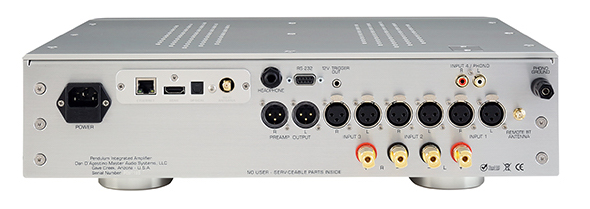
Gomes is all scorching blues and rock in the vein of Stevie Ray Vaughan, abusing his Gibson Flying V to within an inch of its life. On top of that, he has raspy vocals which defy the use of the term ‘midband clarity’. No, this is all about textures which have nothing to do with grace. It was thus I learned that the Pendulum has guts to spare, cranking it through my DeVore O/93s [HFN Mar ’23] to levels I prefer to avoid. But Gomes would be proud – no break-up, no compression, just a guitar onslaught below a voice somewhere in between Steve Marriott and Rod Stewart.
I still can’t get over another revelation to attribute to the Pendulum. It extracted detail from Shirley Bassey’s ‘Goldfinger’ from Dame Shirley Bassey – The Singles [Strawberry QCR3JAM31] which had eluded me despite hearing it countless times in 60-plus years. The stereo spread was wall-to-wall, the lower register slam as impressive as Bassey’s soaring vocals. ‘Majestic’ doesn’t begin to cover it.
If, as I asked before, you’ve been dreaming about owning one of Dan D’Agostino’s products since the days of Krell, but nowadays can stretch to £18,000, this is the entry-level integrated amp for which you have been waiting. It’s like the Swiss Army Knife of amplifiers: unbelievably affordable and versatile. So don’t resist. Instead, just relent.
Hi-Fi News Verdict
After experiencing the Relentless 800 [HFN Jun ’24], I wondered what other miracles D’Agostino had up its sleeve. Who knew it would switch to the other end of the price spectrum to deliver one of the most important high-end integrated amps of the decade? This baby re-opens the debate of integrateds vs. pre and power amps and it begs us to enforce the Law of Diminishing Returns. The Pendulum has swung.Sound Quality: 90%

